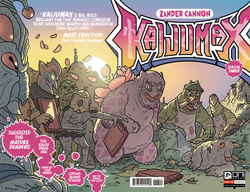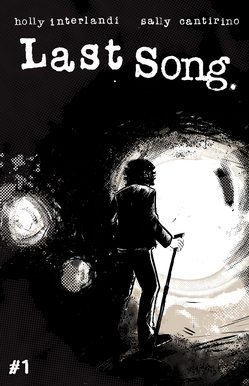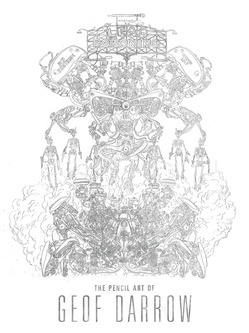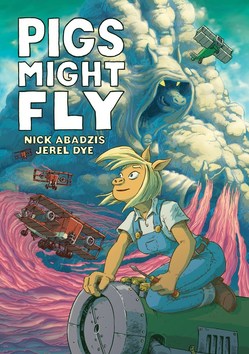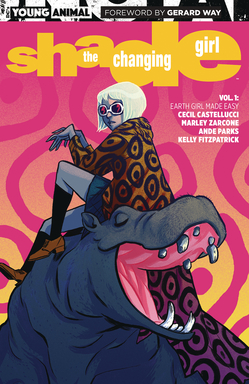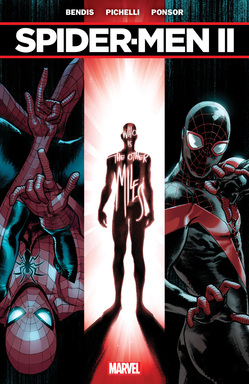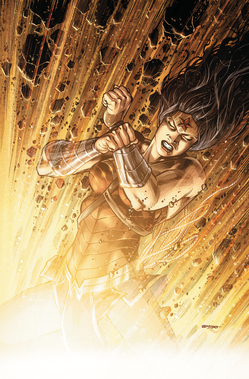Required Reading: Comics for 7/12/17
Main Art by Amancay Nahuelpan
Thwip! Did everyone manage to swing into theaters and catch Spider-Man: Homecoming this weekend? If so, Marvel has a new comic that addresses all of the webslingers currently in sequential art, Spider-Men II, lined up on Wednesday—and we’ll have further suggested reading for you later in the day. If webheads aren’t your style, Black Mask kicks off both a musical ode and brutal secessionist combat, Oni Press offers another installment of beastly prison drama, Vertigo resurrects a political cape comic, IDW plays home to a new full-blown fantasy world, First Second debuts all-ages anthropomorphic barnyard action and Dark Horse provides an art book that requires a magnifying glass to fully appreciate. Arachnid-themed heroism might dominate the conversation this week, but as always, comic shelves have a range of stories to offer intrepid sequential-art fans.
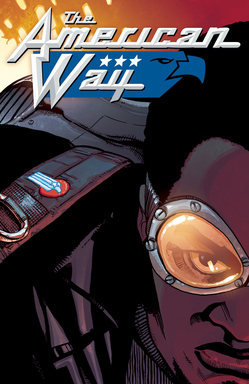 The American Way: Those Above and Below #1
The American Way: Those Above and Below #1
Writer: John Ridley
Artist: Georges Jeanty
Publisher: Vertigo/ DC Comics
While fans wait for the long-promised return of Milestone Media at DC, founded by some of the most creative and influential black comic creators of the ‘90s, there have been a couple of titles to tide them over. The sequel to John Ridley and Georges Jeanty’s excellent The American Way —after a 10-year hiatus—is a welcome surprise, with the creators expanding on their alternate universe in which a black superhero joined the world’s greatest team during the turbulent, rapidly changing ‘60s. This new six-part miniseries builds on that foundation, but pushes it a decade into the future, with free-love counterculture giving way to political unrest and the war on drugs. Thankfully, the original run is being re-released in a collected edition, lowering the bar of entry for new fans who want to get into the series. Caitlin Rosberg
 Calexit #1
Calexit #1
Writer: Matt Pizzolo
Artist: Amancay Nahuelpan
Publisher: Black Mask
The real “Calexit” movement, which calls for the possible secession of California from the United States, may well be a Russia-backed plot to all but rule out a Democrat ever again winning the presidency. Despite real-world parallels, Calexit the comic centers around a fictional world in which mass protests spring up following the election of a fascist president who loses the popular vote along with most of California. Writer (and Black Mask head honcho) Matt Pizzolo and artist Amancay Nahuelpan are no strangers to firebrand political content, having worked together on the provocative Young Terrorists; changes in the political climate since that book’s launch make this new collaboration all the more caustically powerful. Nahuelpan has also further refined his style since Young Terrorists, writing and drawing the brutal Clandestino. There’s a good chance that Calexit will find success in succession. Steve Foxe
 Dread Gods #1
Dread Gods #1
Writer: Ron Marz
Artists: Bart Sears & Tom Raney
Publisher: Ominous Press/ IDW Publishing
Gods and monsters have long been a well to which comic creators often return, trying to bring up new, interesting takes on familiar characters and tropes. What’s rarer is a comic that not only admits to being science-fiction and fantasy, but actively embraces the genres and all the liberties they afford. By never trying to pretend that there are normal people with normal lives, Dread Gods can push into different territories than most high-concept titles. The creators use the book to define what it means to be a god, and what happens when creatures who thought they were gods discover they’re actually monsters in a world that’s been blown apart. The team is solid, with writing by Ron Marz, whose work at CrossGen and on Dynamite books like John Carter: Warlord of Mars prove his capability with a grand sci-fi/fantasy tale. Bart Sears, who owns Ominous Press, provides a back-up story to accompany main artist Tom Raney’s work, and the results are bound to be interesting. Caitlin Rosberg
-

-

-

-

-

-

-

-

-

-

-

-

-

-

-

-

-

-

-

-

-

-

-

-

-

-

-

-

-

-

-

-

-

-

-

-

-

-

-

-

